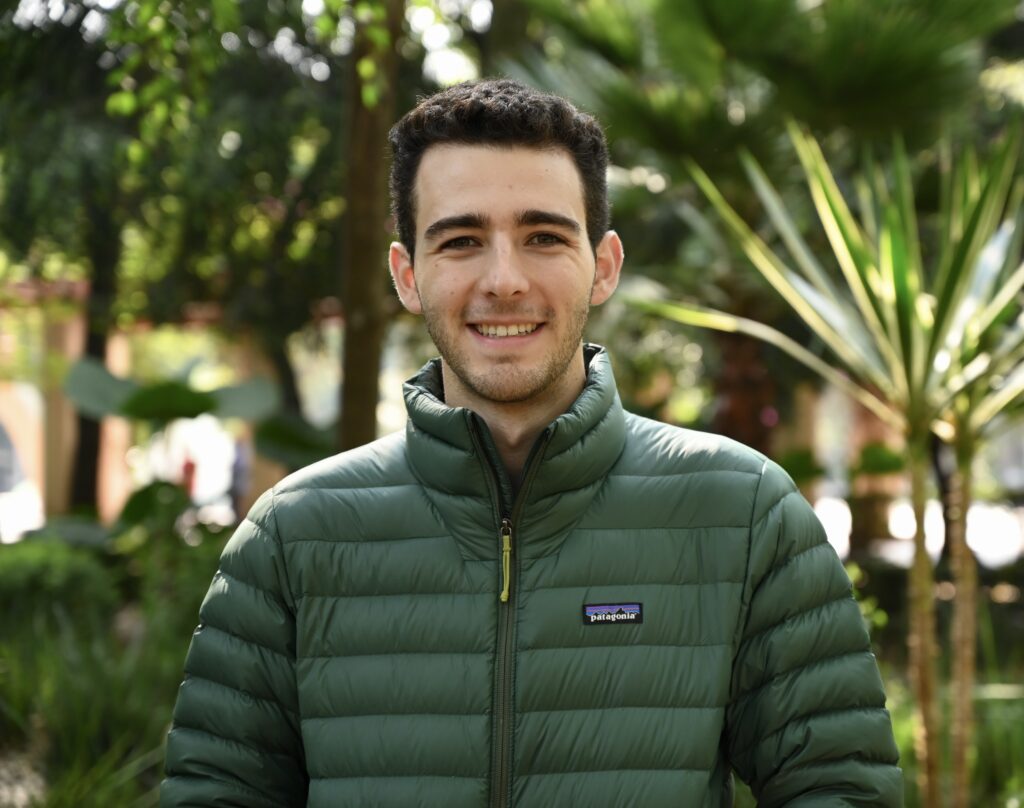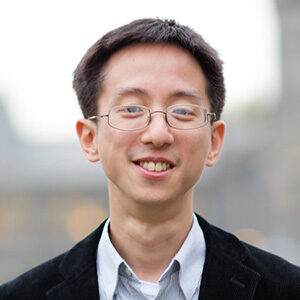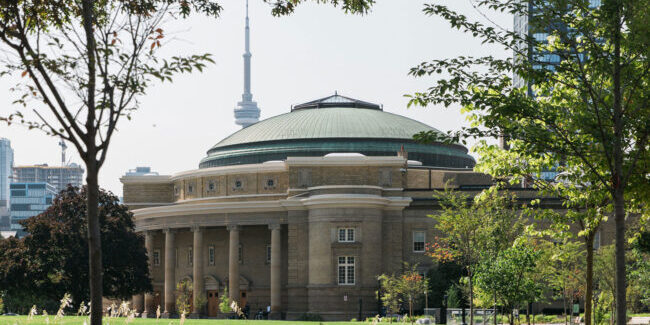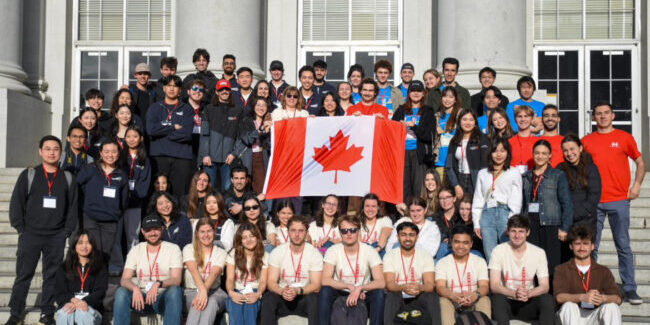Can renewable energy provide a stable and affordable source for our electricity demands? And how will we create efficient electricity grids to meet these needs? These are the kinds of questions that get Martin Staadecker (EngSci 2T4) excited.
The recent graduate, from the Energy Systems major within the Division of Engineering Science (EngSci), has published a research paper in Nature Communications on a key issue in wind and solar energy generation: how to provide a stable electricity supply from sources that literally change with the weather.
During his time in EngSci, Staadecker spent an academic year and summer working with Professor Patricia Hidalgo-Gonzalez at the University of California San Diego. They created computational models of different energy infrastructure scenarios to determine which types of technologies and government investments are most likely to be beneficial.
“Martin’s research — using advanced power grid modeling and optimization to determine optimal policy targets for energy storage — exemplifies the exciting, multidisciplinary problems being tackled at the forefront of Energy Systems Engineering,” says Professor Zeb Tate (ECE), chair of EngSci’s Energy Systems major.
Staadecker is one of many EngSci students who spend their summers in university research labs at U of T and around the world through EngSci’s Engineering Science Research Opportunities Program (ESROP).
“ESROP specifically helps students pursue independent research opportunities at top institutions around the world,” says EngSci’s associate director for Years 3 & 4, Professor Arthur Chan (ChemE). “It’s wonderful to see students like Martin work with leading researchers on solving some of the world’s biggest challenges.”
In addition to ESROP, the university supports summer research through its Centre for International Experience, the University Toronto Excellence Awards, NSERC USRA, and many department-specific summer research programs. Engineering students who conduct research on campus can present their work at the annual Undergraduate Engineering Research Day (UnERD) conference every August.
Writer Christina Heidorn connected with Staadecker to learn more about his experience.
How did this ESROP experience come about?
In 2nd year, Professor Hidalgo-Gonzalez posted in the EngSci newsletter a student opportunity in her Renewable Energy + Advanced Mathematics Lab at UC San Diego. I liked the idea of using math and software to solve problems related to climate change, a topic I am passionate about.
I ended up working with her lab part-time during the school year, which was online at that time due to the pandemic, on a project about long-duration energy storage. With the help of an ESROP – Ex-Op grant, I then moved to San Diego to continue the work full time in the summer.
This research was a multi-university collaboration. As the only undergraduate student, I felt very fortunate to be surrounded by such an experienced team of researchers who provided constant support.
Although most of the work was completed over that summer, the paper was written over the following year. We then went through multiple rounds of submissions, peer-review and editing. It was a multi-year process, which made our publication all the more rewarding.
What is the context for this research and why is it important?
Governments across the world are shifting from polluting fossil fuels towards wind, solar and other forms of renewable energy. Powering your electrical grid with, say, 50% renewable energy is not too hard — many countries are already doing that. But reaching a 100% emission-free electrical grid is difficult.
One challenge is providing power when the sun isn’t shining and the wind isn’t blowing. Today, grid operators compensate at those times by ramping up fossil fuel powered plants. We’d like to find non-polluting ways to provide that energy.
Using big batteries to store renewable energy is part of the solution. They are great at providing bursts of electricity but typically for just four hours or less, not nearly long enough to power a city for days or weeks of cloudy or windless weather.
This is why many are working on long-duration energy storage (LDES) that can provide power for up to several weeks.
There are many types of LDES. Some work like an underwater balloon that stores energy when electricity is cheap by pumping compressed air into a large underwater cavern, and releases the entrapped air through a turbine to generate power when needed. Some use zinc batteries as a cost-effective way to store the large amount of energy needed. Others convert electricity into hydrogen fuel for storage, and then convert it back to electricity as needed.
Our work tried to understand how LDES technologies could impact our electrical grid and electricity prices, and under what circumstances they might be most useful.
To do this, I ran a mathematical optimization model to find the cheapest way to build and operate a 100% emission-free electrical grid using different assumptions — for example, different LDES costs or the cost of building new transmission lines.
We found that several factors could lead to LDES technologies playing a bigger role in our grids than we might have previously thought. For example, if droughts were to intensify — as we are starting to see in many places in the world — then hydropower generation would diminish and LDES would often be the most cost-effective way to fill the gap when wind or solar are unavailable.
LDES could also be cost effective if expanding or relying on transmission lines were to become difficult. For example, wildfires are increasingly forcing utilities to temporarily turn off transmission lines, and negotiations with land owners and neighbouring governments can be difficult.
Most exciting to me is that our research shows that government investment in LDES technologies would lower the cost of electricity and reduce large spikes in electricity prices — for example, when the sun stops shining or the wind stops blowing.
Investments in LDES could bring low, stable and predictable electricity prices, reducing financial risks for businesses and household electricity costs.
You can read more detail about our paper here.
What was especially memorable about your time on ESROP – ExOp?
My experience in San Diego helped me clarify my career and personal life priorities.
Before my ESROP-ExOp, I was considering going into the EngSci Robotics major but the passion I saw in the scientists I worked with motivated me to choose the Energy Systems major instead. I discovered the immense value of having a supportive team focused on a topic I’m passionate about.
I also learned that building computational models, while useful and fun, can never fully capture the possibilities of our unpredictable future. This encouraged me to broaden my horizons and explore less mathematical work. I joined Professor Aimy Bazylak’s (MIE) electrochemical research group for a summer and later interned as laboratory scientist in a small U.S. startup.
Living in San Diego also made me appreciate the importance of friendships and one’s environment. Moving abroad during COVID was lonely at times and I learned to value the friends I had and the new ones I made, some of whom I still talk to and visit occasionally. Surfing weekly on San Diego’s beaches or exploring the nearby rock climbing areas is an experience I miss.
What are you doing now?
I just started a two-year Master’s at MIT in their Technology and Policy Program, researching ways to measure greenhouse gas emissions from a company’s supply chain — an essential and mostly uncharted subject. My days are spent reading about the field while taking courses on economics, supply chains, sustainability and the interface of science, technology and policy.
What are your future plans?
My principal goal is to work on ambitious climate-related projects, whether that be in industry, government or academia. On the short term, I’m looking at doing a summer internship abroad in the environmental consulting space.
Do you have any advice for current students?
Try not to underestimate your value as a student! Most employers or research advisors are not so concerned about experience but are looking for an excited and hard-working student to come knocking on their door. My ESROP journey started with a carefully-worded email to a professor I didn’t know asking to work in a field I had no experience in. That’s also how I landed an internship a few summers later. If there’s something you’re interested in doing, reach out even if you don’t feel qualified!







